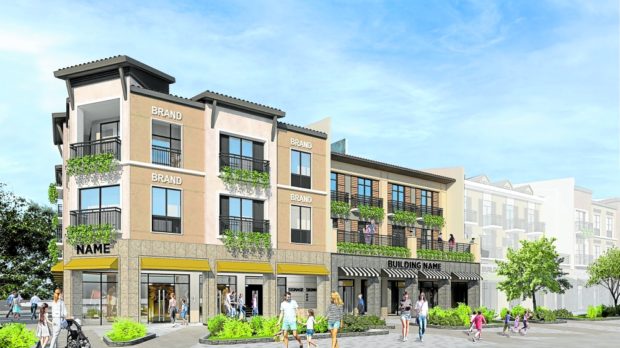Modern take on the iconic shophouse
Written by Amy R. Remo
This heritage icon is finding its way back into the modern urban setting, reinstating a once quintessential building in many Asian economies into its former glory.
Over the past decade, shophouses have been gaining renewed interest and demand, particularly in neighboring economies in Southeast Asia. Typified as a two- or three-story building that has the store on the ground floor and residence on the upper floors, shophouses were mostly popular in the 19th and early 20th century.

Today, there continues to be a massive revival of these historical icons. In Singapore for instance, the total shophouse sales value in 2021 surged to a new record high at S$1.9 billion, data from Knight Frank showed. This was the first time that the transaction value breached the billion-dollar mark, it added.
“Investor interest for shophouses as a defensive asset class soared during the pandemic, much like what was observed for residential properties… Steady gentrification in shophouse districts will also continue to fuel demand, and it is expected that the total sales value for the shophouse market could reach S$2 billion in 2022,” the report stated.
Even in the Philippines, many are now finding value and potential gains from shophouses.
Integral in community-building
“They are gaining popularity because of their historical significance. Shophouses are also viable retail shops in an integrated community. Shophouses now are very popular because they integrate historical and modern features of retail spaces,” Joey Roi Bondoc, associate director of Colliers Philippines, said in an interview with Inquirer.
“Shophouses can thrive within and outside Metro Manila. They are likely to thrive in an integrated or masterplanned community. Developers should consider building shophouses in their mixed-use developments as they also provide convenience to residents. The shophouses will become more popular moving forward,” Bondoc added.
Architect John Ian Lee Fulgar of Fulgar Architects pointed out that the market for shophouses is growing because these offer an efficient way to maximize limited land space in urban areas. Vice versa, owners can transform them into residential units in areas where housing is scarce.
“There is a tremendous charm to the mom-and-pop vibe in social entrepreneurship, wherein the community supports each other. Shophouses have become more than just a dwelling but more so, a place for communities to thrive as they did during the independence of our forefathers. Not only did they empower the neighborhood, but they also nurtured the relationships of neighbors,” Fulgar explained.
For (and by) the community
In the Philippines, these shophouses are finding their rightful place in contemporary estates such as the 290-ha Cresendo, Ayala Land’s first mixed-use masterplanned estate in Tarlac.
While Cresendo will be an ode to the rich history of Tarlac, this upcoming modern estate is seen to be a significant growth driver of the local economy, primed to generate fresh job and business opportunities not only for the national and foreign companies that will located here, but more importantly, for the homegrown entrepreneurs.
Positioned right in the middle of the estate’s downtown, the shophouse lots will face a 12-meter wide promenade while the rear side faces the service road, making these accessible from multiple vantage and access points.
“The overall vision for Cresendo is to be able to create a modern local community whether you’re a local regional or national player. Ayala Land sees Cresendo as an enabler for the community because in the end, what we want to create is an inclusive and diverse marketplace,” said John R. Estacio, Estate Development head of Cresendo and AVP of Ayala Land.
“The shophouses are about two to three-story buildings (in) about 500 sqm lots (whose) package price will be suitable for local or regional investors. You have retail on the ground floor, potentially residential on the second floor, or an office on the third,” Estacio explained.
These shophouses are expected to cater to small to medium businesses whose owners and employees would opt to live next to their jobs and ventures. Through this kind of offering, Ayala Land is helping local entrepreneurs build a better future.
“Our shophouse product in Cresendo is one of the fastest-moving offering we have today. We are seeing a growing interest from regional business players who are keen on expanding their operations in Tarlac, while some are thinking of opening their new business ventures here. By end of this year, we’ll have our first set of shophouses up and running, hosting government and retail establishments,” Estacio added.
Ayala Land is indeed set to define the next stage of growth in Tarlac, and soon in more regions as they introduce shophouse lots to more areas across the country—turning this cultural icon into a modern offering that bodes well with the evolving demands of the times and poised to yield potentially exceptional gains for its investors.
ADVT
Read more Business stories:
Greenfield District supports Mandaluyong LGU in bolstering emergency response
Providing Filipino hospitality to every traveler
Agri machinery provider ADAMCO raises Php1.0 billion pesos from DBP and Security Bank



